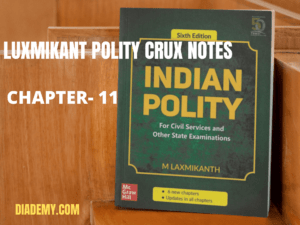
| Shankari Prasadh Case (1951) | · First amendment act 1951 – Article 31A added (Right to property)
· Right to property was challenged · SC: Power to amend the Constitution under Art 368 includes power to amend the FR · Art 13 “law” includes – only ordinary laws and not CAA · Parliament can abridge FR by enacting constitutional amendment act and such will not be void under article 13 |
| Golaknath Case (1967) | · 9th sch. was challenged
· SC ruled Parl. Cannot take away FRs · CAA is also under Art.13 · The doctrine of perspective overruling · Debate started: Parl. Supremacy v/s Judiciary supremacy |
| Parl. Reacted by | 24th CA → Parl. has power to abridge FRs [Art 13, 368 amended] |
| Kesavananda Bharati (1973) | · 13 Judge bench (largest)
· Parliament could amend any part of the const. · But not basic structure – Judicial innovation. |
| 1st time Indira Nehru Gandhi Case (1975) | · SC un-validate the provision of keeping solution of the PM & special of 15 from Jurisdiction of court as it was beyond the power of Parl.
· Parl. Reacted by 42nd CAA a. Declared that there is no constituent power of the Parl. can be questioned court on any ground of contravention of any FRs b. Power of Judicial Review limited
|
| Minerva Mills case (1980) | SC invalidated this provision in Minerva Mills case, as it exclude it from Judicial viewer which is a ‘basic feature’. |
| Waman Rao Case (1981) | Doctrine of basic structure and it evolved apply on the CAA after 24/04/1993 |
| Elements of Basic Structure | Keshvananda Bharati v. UOI → Preamble; Supremacy of the constitution, Separation of powers between the legislature, the executive and the judiciary; Republic and democratic form of government; Secular character of the constitution; Federal character of the constitution; Sovereignty and unity of India; Freedom and dignity of the individual; Mandate to build a welfare state; Parliamentary System
India Gandhi v. Raj Narayan → India as a sovereign democratic republic; Equality of status and opportunity of an individual; Secularism and freedom of conscience and religion; Government of laws and not of men (i.e., Rule of Law); Judicial review; Free and fair elections Minerva Mills case → Limited power of Parliament to amend the constitution; Judicial review; Harmony and balance between fundamental rights and directive principles Narsimha Rao Case → Parl. System Indira Sawhney v. UOI → Rule of Law Kihoti Hollohon Case → Free and fair elections; sovereign, democratic and republican structure S.R. Bommai case → Federalism cannot be suspended; secularism and democracy IR. Cohelo Case → Judicial Review |
Get all essential Crux notes by clicking here https://diademy.com/product/staticcrux/